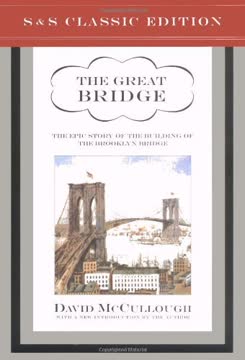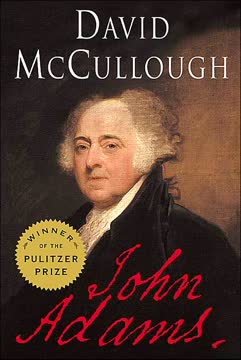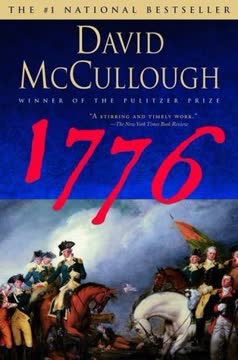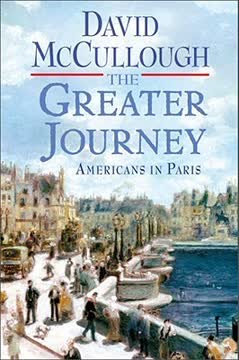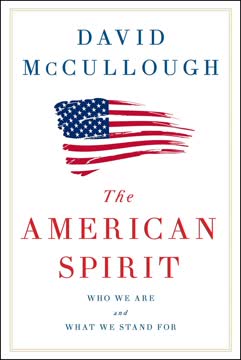Key Takeaways
1. Visionary Leadership Drives Monumental Projects
The completed work, when constructed in accordance with my designs, will not only be the greatest bridge in existence, but it will be the greatest engineering work of the continent, and of the age.
Roebling's unwavering vision. John A. Roebling's ambitious plan for the Brooklyn Bridge was fueled by his visionary leadership. He saw the bridge not just as a practical transportation link, but as a symbol of progress, unity, and American ingenuity. This grand vision inspired others and drove the project forward despite numerous obstacles.
Beyond technical expertise. Roebling's leadership extended beyond his engineering skills. He possessed a rare combination of technical knowledge, artistic sensibility, and persuasive communication, enabling him to convince skeptical stakeholders and rally support for his audacious plan. His ability to articulate the bridge's symbolic importance was as crucial as his engineering expertise.
Inspiring a shared dream. Roebling's vision resonated with the aspirations of both New York and Brooklyn, cities eager to assert their prominence on the world stage. His vision transformed a practical engineering project into a shared dream, uniting diverse communities behind a common goal.
2. Overcoming Skepticism Through Expertise and Determination
If one plan won’t do, then another must.
Facing public doubt. Roebling's plan faced intense scrutiny and skepticism from engineers, politicians, and the public. Critics questioned the feasibility of a single span of such length and the safety of using steel cables. He combatted these doubts with his expertise, detailed calculations, and unwavering determination.
Expert endorsement. To quell the rising tide of criticism, Roebling assembled a board of distinguished consulting engineers. Their approval, though initially sought only for sanction, provided crucial validation and helped silence the doubters. This strategic move demonstrated Roebling's political savvy and his commitment to transparency.
Adaptability and resourcefulness. When faced with unforeseen challenges, Roebling displayed remarkable adaptability and resourcefulness. He constantly sought innovative solutions, adapting his plans to overcome obstacles and maintain the project's momentum. His famous saying, "If one plan won't do, then another must," encapsulates his unwavering commitment to finding a way forward.
3. The Human Cost of Progress: Sacrifice and Resilience
My only regret is that such a pure unselfishness was not sufficiently appreciated by myself.
Roebling's personal sacrifices. The construction of the Brooklyn Bridge demanded immense personal sacrifices from the Roebling family. John A. Roebling's death early in the project cast a long shadow, while Washington Roebling's subsequent illness and near-total incapacitation tested the limits of human endurance.
Emily Roebling's unsung heroism. Emily Warren Roebling played a pivotal role in the bridge's completion, serving as her husband's eyes, ears, and hands. She mastered complex engineering concepts, relayed instructions, and navigated the treacherous political landscape, all while caring for her ailing husband. Her dedication and resilience were essential to the project's success.
The toll on workers. The construction of the bridge also took a heavy toll on the workers, who faced dangerous conditions, long hours, and the constant threat of caisson disease. The human cost of progress is a recurring theme, highlighting the sacrifices made by ordinary individuals in the pursuit of extraordinary achievements.
4. Engineering as a Blend of Science, Art, and Politics
A force at rest is at rest because it is balanced by some other force or by its own reaction.
Beyond mere calculation. The Brooklyn Bridge was more than just a feat of engineering; it was a work of art. John A. Roebling believed that engineering was a "spiritual or ideal conception," governed by mathematical principles and infused with aesthetic considerations. He sought to create a structure that was not only strong and functional but also beautiful and inspiring.
Harmony of forces. Roebling's design embodied a grand harmony of opposing forces: the tension of the steel cables and the compression of the granite towers. This balance of forces reflected his philosophical belief in the interconnectedness of all things and the importance of finding equilibrium in a complex world.
Navigating political currents. The construction of the bridge was also a political undertaking, requiring Roebling and his successors to navigate the complex and often treacherous waters of New York and Brooklyn politics. Securing funding, managing contracts, and maintaining public support demanded political skill and a willingness to compromise.
5. The Bridge as a Symbol of Unity and Ambition
New York will remain the center where these lines meet.
Connecting two cities. The Brooklyn Bridge was conceived as a symbol of unity, linking the burgeoning cities of New York and Brooklyn. It represented a desire to overcome geographical barriers and forge a stronger, more interconnected community.
American ambition. The bridge also embodied the boundless ambition and optimism of the late 19th century. It was a testament to American ingenuity, engineering prowess, and the belief that anything was possible with enough determination and hard work.
Global significance. Roebling envisioned the bridge as part of a larger global mission, connecting East and West and establishing New York as the world's commercial emporium. The bridge was not just a local project but a symbol of America's growing power and influence on the world stage.
6. The Power of Family Legacy and Collaboration
We may affirm absolutely that nothing great in the world has been accomplished without passion.
A family affair. The Brooklyn Bridge was a family affair, with John A. Roebling passing the torch to his son, Washington, after his untimely death. This legacy of expertise and dedication ensured the project's continuity and success.
Collaboration and expertise. Washington Roebling assembled a team of talented engineers and workers, fostering a collaborative environment where expertise was valued and innovation was encouraged. The success of the bridge depended on the collective efforts of a diverse group of individuals, each contributing their unique skills and knowledge.
The Roebling standard. The Roeblings instilled a culture of excellence and unwavering commitment to quality. This dedication to the highest standards of engineering and craftsmanship ensured that the bridge would be a lasting testament to their vision and skill.
7. The Unforeseen Challenges and Adaptations in Construction
The most unforeseen circumstances will swamp you and baffle the wisest calculations. Only vitality and plenty of it helps you.
Caisson disease. The use of pneumatic caissons to build the bridge's foundations presented unforeseen challenges, including the mysterious and debilitating illness known as caisson disease, or "the bends." This affliction took a heavy toll on the workers and forced engineers to adapt their methods to mitigate the risks.
Material fraud. The discovery that a contractor had been supplying substandard wire for the cables threatened the structural integrity of the bridge. This crisis forced Roebling to implement stricter inspection procedures and find creative solutions to compensate for the compromised materials.
Adapting to the unexpected. The construction of the Brooklyn Bridge was a constant process of adaptation and innovation. Engineers had to overcome unforeseen challenges, adapt to changing conditions, and find creative solutions to problems that had never been encountered before.
8. The Enduring Impact of a Landmark Achievement
He spoke our language imperfectly, because he had not the advantage of being born on our soil, but he spoke the genuine language of America at Cincinnati, Pittsburgh, and Niagara…
A lasting symbol. The Brooklyn Bridge has become an enduring symbol of New York City, American ingenuity, and the power of human collaboration. Its iconic silhouette has been immortalized in countless works of art, literature, and film, solidifying its place in the collective imagination.
A catalyst for growth. The bridge spurred economic growth and development in both New York and Brooklyn, facilitating trade, transportation, and cultural exchange. It transformed Brooklyn from a "moral suburb" into a thriving metropolis, forever altering the urban landscape of the region.
A testament to human potential. The Brooklyn Bridge stands as a testament to the power of human vision, determination, and resilience. It is a reminder that even the most ambitious dreams can be realized with enough courage, skill, and unwavering commitment.
Last updated:
FAQ
What is The Great Bridge: The Epic Story of the Building of the Brooklyn Bridge by David McCullough about?
- Comprehensive historical narrative: The book chronicles the conception, design, and construction of the Brooklyn Bridge, one of the 19th century’s greatest engineering feats.
- Focus on key figures: It centers on the Roebling family—John A. Roebling, Washington Roebling, and Emily Warren Roebling—and their pivotal roles in the project.
- Context of the era: McCullough situates the bridge within the broader social, political, and technological landscape of late 19th-century New York and Brooklyn.
- Blend of drama and detail: The narrative weaves together technical innovation, political intrigue, personal sacrifice, and the bridge’s lasting impact on urban life.
Why should I read The Great Bridge by David McCullough?
- Engineering marvel explained: The book makes complex engineering concepts like caisson construction and cable spinning accessible and engaging.
- Human drama and perseverance: It highlights the personal courage and determination of the Roeblings, especially Washington and Emily, in overcoming illness and opposition.
- Insight into urban transformation: Readers gain a deeper understanding of how the bridge symbolized progress and unity, transforming New York and Brooklyn.
- Rich historical context: The story offers a window into the politics, corruption, and social changes of Gilded Age America.
Who were the main people behind the Brooklyn Bridge in The Great Bridge by David McCullough?
- John A. Roebling: The visionary German-American engineer who designed the bridge and pioneered wire rope and suspension bridge technology.
- Washington Roebling: John’s son, who became Chief Engineer after his father’s death, overseeing construction despite debilitating illness.
- Emily Warren Roebling: Washington’s wife, who became the bridge’s de facto superintendent, managing communications and technical details during her husband’s illness.
- Political and business leaders: Figures like Henry C. Murphy, William Kingsley, and mayors Seth Low and William Grace played key roles in the bridge’s management and politics.
What were the major engineering challenges and innovations in building the Brooklyn Bridge according to David McCullough?
- Pneumatic caisson foundations: Workers excavated riverbeds inside pressurized caissons, facing dangers like “the bends” and catastrophic fires.
- Steel cable construction: The bridge was the first to use steel wire for its cables, a controversial and pioneering choice at the time.
- Structural design advances: The bridge combined massive granite towers, diagonal stays, and a stiffening truss to achieve unprecedented span and stability.
- Scale and logistics: Every aspect, from stone transport to cable spinning, was executed on a scale never before attempted in bridge building.
How did political corruption and scandals affect the Brooklyn Bridge construction in The Great Bridge by David McCullough?
- Tweed Ring influence: William M. Tweed and his associates controlled the New York Bridge Company, leading to graft, inflated costs, and political manipulation.
- Wire fraud scandal: The awarding of contracts to J. Lloyd Haigh, who supplied substandard wire, nearly derailed the project and led to public investigations.
- Board conflicts and reform: Factional disputes among trustees and public outcry led to reform committees and increased oversight.
- Impact on public trust: Scandals and delays threatened public confidence, requiring strong leadership to keep the project on track.
What is caisson disease (“the bends”) and how did it impact the Brooklyn Bridge project in The Great Bridge?
- Definition and symptoms: Caisson disease is decompression sickness caused by rapid pressure changes, leading to joint pain, paralysis, and sometimes death.
- Impact on workers: Many workers suffered or died from the disease while excavating in pressurized caissons under the river.
- Washington Roebling’s illness: The Chief Engineer himself was severely affected, resulting in chronic illness and forcing him to supervise the project from home.
- Medical advances: Dr. Andrew H. Smith’s research during the project laid the groundwork for modern understanding and treatment of decompression sickness.
What role did Emily Warren Roebling play in the Brooklyn Bridge project according to David McCullough?
- Primary liaison: Emily acted as the main link between her ailing husband and the engineers, trustees, and workers on site.
- Technical expertise: She learned engineering principles, made technical drawings, and supervised installations, earning the respect of the engineering team.
- Public and symbolic figure: Emily represented the bridge at meetings and public events, becoming a symbol of perseverance and women’s capability in engineering.
- Legacy: Her contributions were later honored with her name inscribed on the bridge and widespread recognition of her role.
How was the cable spinning and wire stringing process carried out for the Brooklyn Bridge in The Great Bridge?
- Traveler ropes and carriers: Endless loops of wire ropes, called travelers, shuttled wires across the river, forming parallel strands for the main cables.
- Precision and innovation: Wires were laid with exact tension and sag, using specialized machinery and skilled workers suspended high above the river.
- Challenges faced: The process was complicated by weather, the need for uniformity, and the discovery of substandard wire supplied by a contractor.
- Scale of the task: The cable spinning was unprecedented in size and complexity, setting new standards for suspension bridge construction.
How did the political and social environment of New York and Brooklyn influence the Brooklyn Bridge project in The Great Bridge?
- Tammany Hall dominance: Political machines controlled contracts, appointments, and funding, leading to corruption and delays.
- Reform movements: Scandals prompted the rise of reform committees and public demand for transparency and accountability.
- Urban growth and rivalry: The bridge was seen as a means to unite and elevate Brooklyn, then the third-largest city in America, with New York.
- Public opinion: The project became a symbol of both civic pride and political controversy, reflecting the era’s complexities.
What were the key accidents and dangers faced during the Brooklyn Bridge’s construction as described in The Great Bridge?
- Fatal falls and injuries: Workers died from falls off towers and scaffolds, and from being struck by falling stones or entangled in machinery.
- Caisson hazards: Fires, blowouts, and caisson disease made foundation work especially perilous.
- Cable accidents: The snapping of ropes during cable spinning caused deaths and raised public fears about safety.
- Overall risk: The project was marked by frequent accidents, highlighting the dangers of large-scale engineering in the 19th century.
How did the Brooklyn Bridge’s completion impact New York and Brooklyn, according to The Great Bridge by David McCullough?
- Economic and urban growth: The bridge boosted property values, commerce, and helped integrate Brooklyn into New York City’s urban fabric.
- Transportation revolution: It replaced ferries as the main crossing, with bridge trains and roadways carrying millions of passengers and vehicles.
- Cultural and symbolic importance: The bridge became a beloved landmark, inspiring art, literature, and public affection as “The Eighth Wonder of the World.”
- Legacy of unity: The bridge symbolized the merging of two great cities and the spirit of American progress.
What are the key takeaways from The Great Bridge by David McCullough?
- Triumph of human ingenuity: The Brooklyn Bridge stands as a testament to vision, perseverance, and technical innovation.
- Personal sacrifice and teamwork: The Roeblings’ dedication, along with the efforts of countless workers and assistants, made the impossible possible.
- Complex interplay of forces: The project’s success required navigating political corruption, public skepticism, and unprecedented engineering challenges.
- Enduring legacy: The bridge’s story continues to inspire as a symbol of what can be achieved through determination and collaboration.
What are the best quotes from The Great Bridge by David McCullough and what do they mean?
- “The shapes arise!” —Walt Whitman: Captures the spirit of creation and the emergence of monumental works like the Brooklyn Bridge.
- “A man of iron.” Describes John Roebling’s unyielding will and determination in the face of adversity.
- “It so happens that the work which is likely to be our most durable monument... is a work of bare utility; not a shrine, not a fortress, not a palace, but a bridge.” —Montgomery Schuyler: Highlights the bridge as a lasting symbol of practical achievement.
- “And yet the bridge is beautiful in itself.” —Scientific American: Emphasizes the bridge’s aesthetic as well as its engineering significance.
Review Summary
The Great Bridge receives widespread acclaim for its meticulous research and engaging narrative. Readers praise McCullough's ability to bring history to life, seamlessly blending engineering details with human stories. The book explores the political, social, and technological context of the Brooklyn Bridge's construction, highlighting the Roebling family's dedication and sacrifices. While some find the technical aspects challenging, most appreciate the author's storytelling prowess. Reviewers consistently commend McCullough's talent for making complex subjects accessible and captivating, solidifying the book's status as a masterpiece of narrative history.
Similar Books
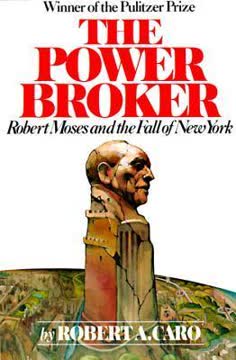
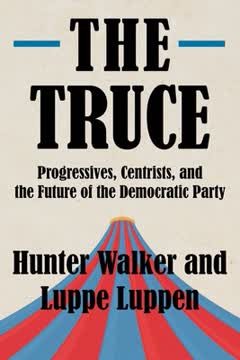
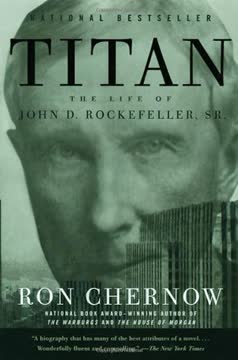
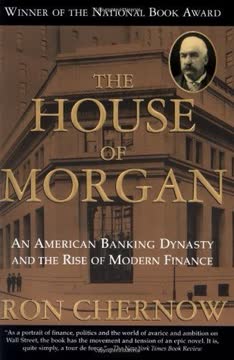
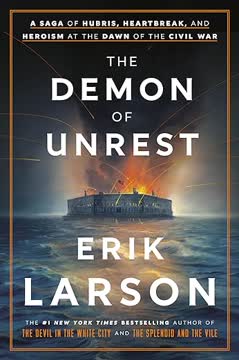
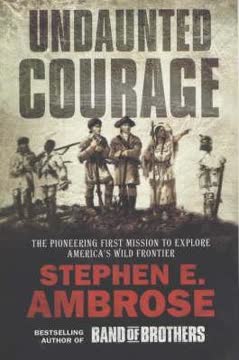

Download PDF
Download EPUB
.epub digital book format is ideal for reading ebooks on phones, tablets, and e-readers.
